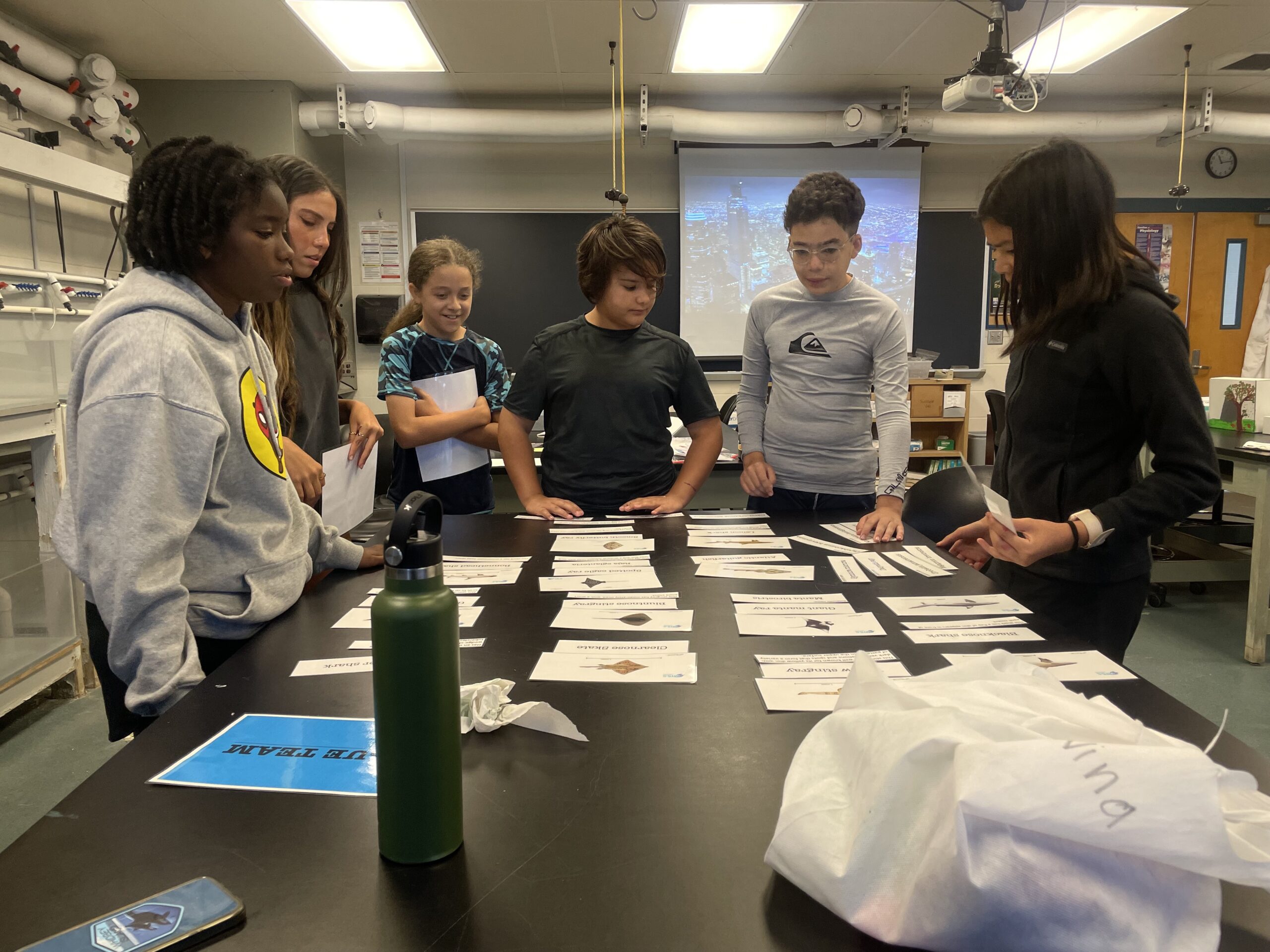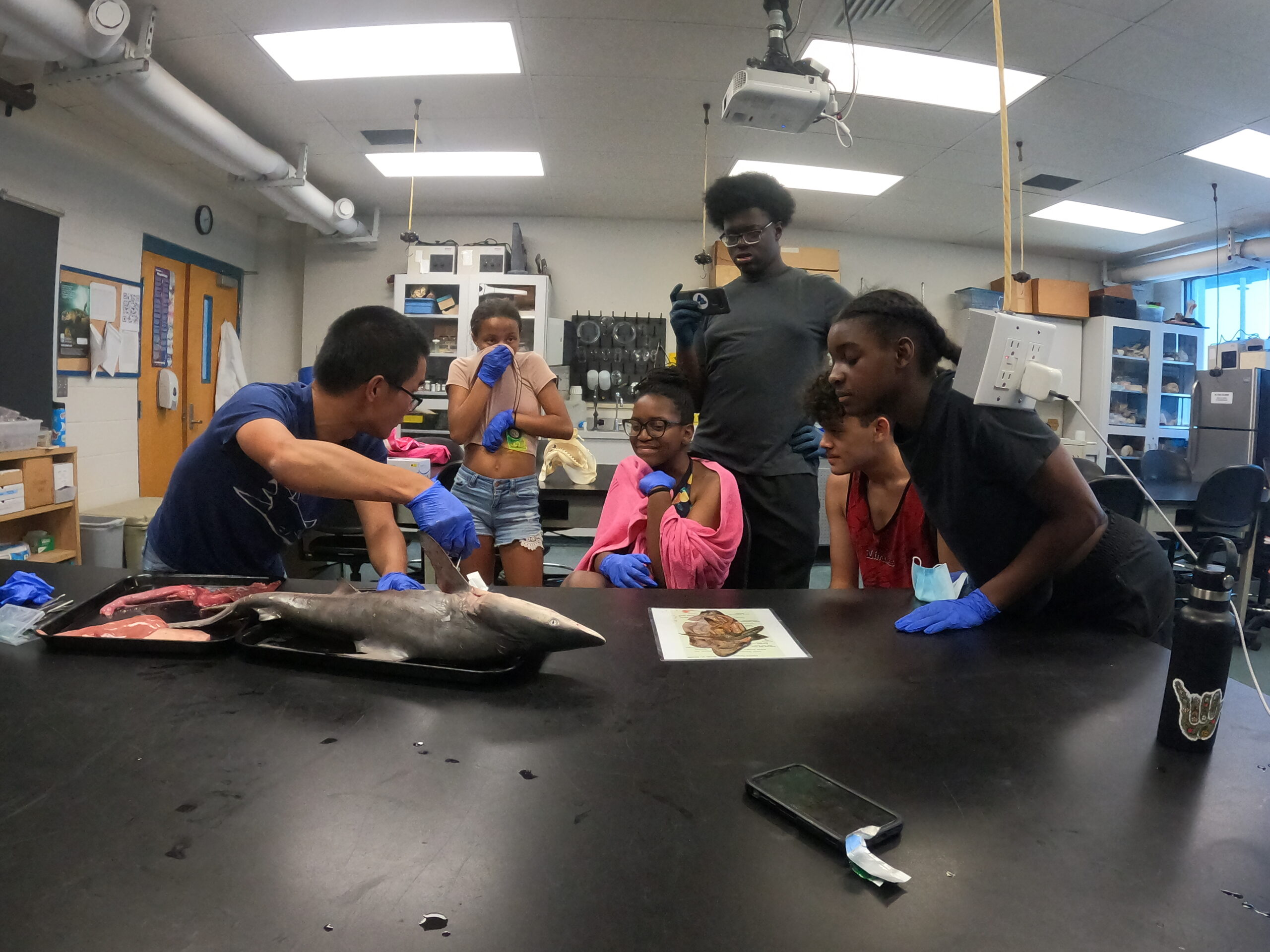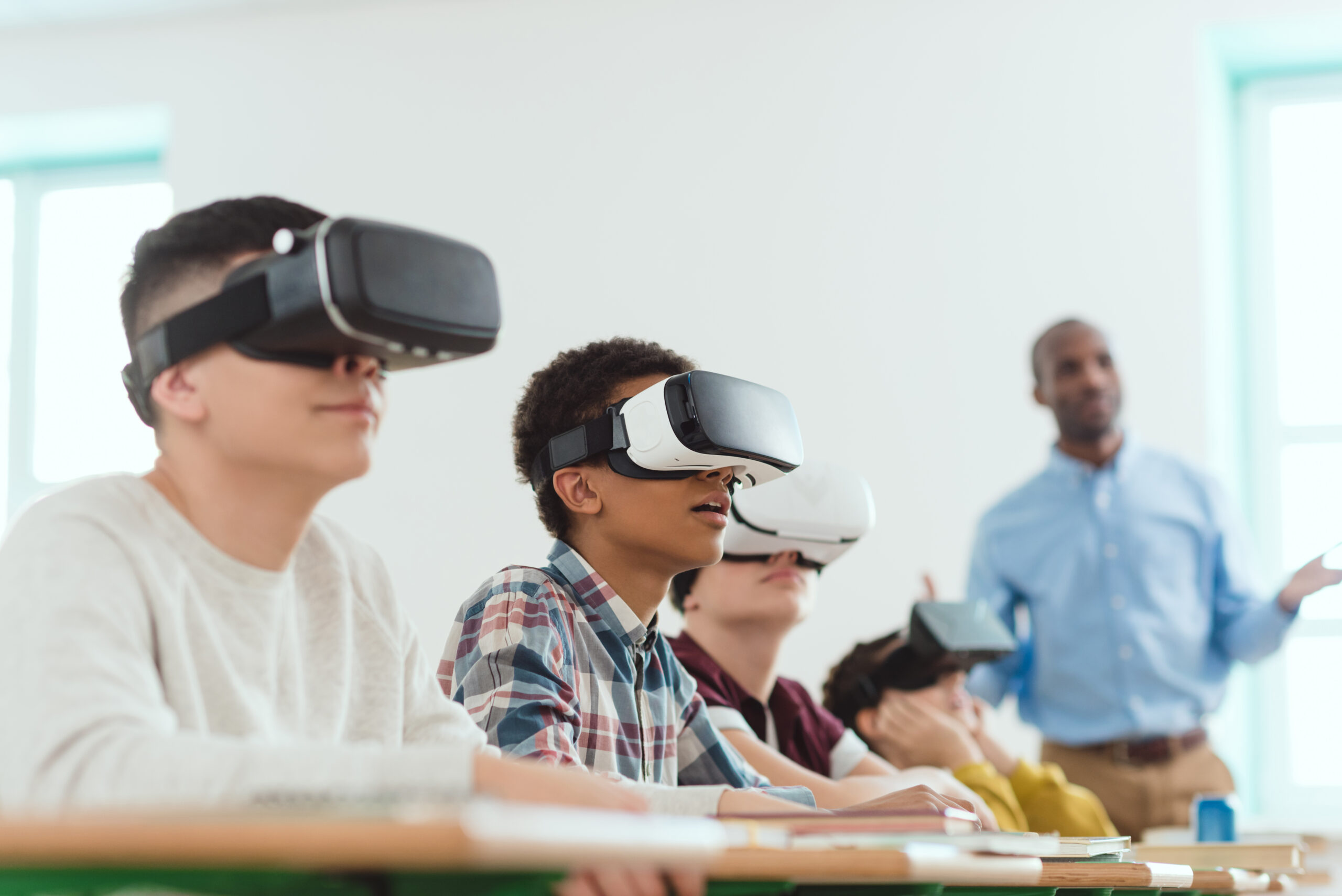Gill Guardians embrace cutting-edge tech for interactive shark experiences
New emerging technology makes it easier to connect people with sharks and the ocean than ever before. Gill Guardians is moving into the 21st century by using technology such as LiDAR and 360 degree cameras to bring shark research and conservation to life.

Students learning about different shark species. Photo © Jasmin Graham
LiDAR stands for light detection and ranging, and this technology can now be held in the palm of your hand. Having these capabilities on an iPhone allows us to take photos in 3D. We played around with this cool feature and were able to create a virtual shark dissection. One of our Eugenie Clark Fellows was able to build this interactive activity which now is freely available on our Gill Guardians portal. The dissection begins with the external view of a shark, and before the dissection even begins there is an opportunity to learn some cool facts about shark skin and dermal denticles. You can click on various parts of the shark’s body to zoom in and get a more detailed view of things like the caudal (or tail) fin, pelvic fins, pectoral fins, gills, dorsal fin, head etc. Clicking on these body parts will cause a pop-up to display on screen telling you a bit about that part of the sharks body and some fun facts. There is even a little information about the piece of fin that is missing due to us taking a fin clip from the specimen for genetic analysis. Clicking the centre of the body will “open up” the shark for dissection. By clicking various internal body parts, you can activate pop-ups that tell you what the body parts are and what they do. Not only can you open the body cavity of the shark, but you can also dissect the gills and eyeballs by clicking on them. This unique virtual experience allows people to connect in a way with sharks, that would have previously required a lab and access to a shark specimen. The ability to explore shark anatomy in the comfort of your own home is a technological advancement that makes science increasingly more accessible and we plan to use these tool in the future to create other cool experiences.

Students watching a shark dissection in-person. Photo © Jasmin Graham
We are currently exploring the creation of Virtual Reality experiences. We have purchased some VR headsets as well as a 360 degree camera. We were able to take this camera out with us on some shark surveys to record the process. The prototype of our VR shark survey experience has been created and we are working on a second, more advanced iteration now. We should be able to launch our VR experience by the end of 2023. As part of our in-person outreach portion of Gill Guardians, we will be taking these VR headsets to different community events to allow participants to experience what it’s like to conduct a scientific shark survey. In the VR experience we show how we deploy and haul various fishing gear types as well as our shark workup process. The experience will last about 3-4 minutes. After we successfully launch our first VR experience, we will be looking forward to expanding this work to include additional VR shark experiences.

Students wearing VR headsets. Photo © LightField Studios | Shutterstock
